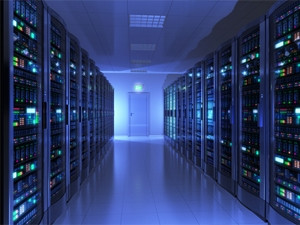
Data centres in SA are in the early stages of development. As such, owners and operators are in an advantageous position to integrate sustainable, and, importantly, cost-effective energy solutions such as wind energy to significantly drive down energy costs.
So says Peter Greaves, data and ICT facilities expertise leader at engineering, management and technical services provider, Aurecon.
"Data centres have, for years, been known to be excessive consumers of power, consuming up to 3% of all global electricity production, and roughly 10 times more per square metre than the average office," says Greaves.
He points out cooling systems in data centres seem to be the largest power guzzler. However, Greaves notes, free cooling opportunities are possible in many locations, including in SA, especially if the air temperature that is supplied is in line with the American Society of Heating, Refrigerating, and Air-Conditioning guidelines (18^0C to 27^0C).
Market research firm IDC says, despite being ancillary to the key requirements around infrastructure management and system integration, it is a fact that power and cooling strategies have a weight on the total cost of operating and on-premises infrastructure.
Looking at cooling technologies that are also relevant to modular approaches, IDC, in a recent study, found the majority of respondents believe traditional raised floors (80%) and lowered ceilings (76%) provide the best practices for minimising thermal dissipation, while free air cooling (78%) is similarly popular.
Temperature requirements
"With supply air temperatures of up to 27^0C, we need outside air temperatures at 25^0C or less in order to get significant benefits from free cooling," says Greaves.
"Data centre managers then need to decide whether they are going to use direct or indirect free-cooling. I tend to prefer indirect free-cooling via a heat wheel or heat exchanger, as outside air contaminants or humidity levels do not restrict the use of free cooling."
According to Greaves, there is definitely more opportunities to use this type of indirect free cooling in certain areas of SA, particularly where the temperature falls below 19^0C and the humidity is below 60RH [relative humidity] for more than 2 500 hours per year.
"If we look at what big operators are achieving overseas, then we are in the ideal position to start designing and developing more sustainable facilities."
For example, he explains, Google's data centre in Hamina, Finland, wants to become carbon neutral and it recently signed a deal with a wind farm operator in Sweden to power its Finnish facility with wind turbines.
Companies like Google are always looking for a competitive edge, says Greaves. They are looking for smarter solutions in their engineering for a variety of things, including data centres, corporate headquarters, and research and development facilities. Wind investment is just another competitive solution, but there are many more, he states.
"As South African data centres continue to develop, I predict that a growing number of operators will be more willing to tackle sustainability challenges head-on and incorporate more progressive solutions into their data centre designs and development."
Share